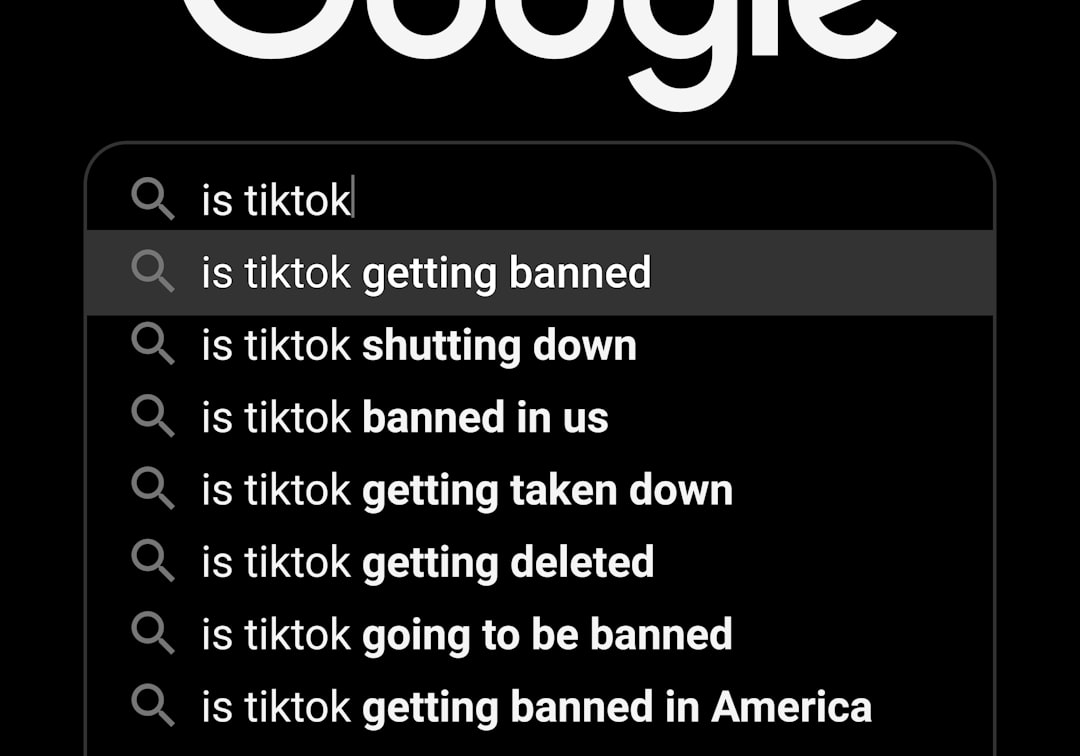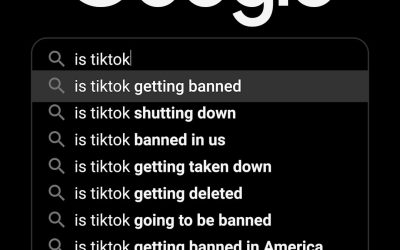How To Create A SAAS APP? Beginner Tips

SAAS applications, or Software as a Service applications, have become increasingly popular in recent years. These applications are hosted on the cloud and accessed through a web browser, eliminating the need for users to download and install software on their devices. Understanding the basics of SAAS applications is crucial for anyone looking to develop or use these applications. In this article, we will explore the definition of SAAS applications, their advantages, and provide examples of popular SAAS applications.
Understanding the Basics of SAAS Applications
SAAS applications are software applications that are hosted on the cloud and accessed through a web browser. Unlike traditional software, SAAS applications do not require users to download or install anything on their devices. Instead, users can simply log in to the application using their credentials and access all the features and functionalities from any device with an internet connection.
One of the main advantages of SAAS applications is their accessibility. Since they are hosted on the cloud, users can access them from anywhere, at any time, using any device with an internet connection. This makes SAAS applications highly convenient for both individuals and businesses.
There are numerous examples of popular SAAS applications available today. Some of the most well-known ones include Salesforce, which is a customer relationship management (CRM) platform; Slack, which is a team collaboration tool; and Dropbox, which is a file hosting service. These applications have gained popularity due to their ease of use, scalability, and ability to cater to specific user needs.
Identifying Your Target Audience and User Needs
Identifying your target audience and understanding their needs is crucial when developing a SAAS application. By doing so, you can tailor your application to meet their specific requirements and ensure its success in the market.
There are several methods for identifying your target audience and user needs. One approach is conducting market research to gather information about potential users’ demographics, preferences, and pain points. This can be done through surveys, interviews, and analyzing competitor products.
Another method is creating user personas, which are fictional representations of your target audience. User personas help you understand your users’ goals, motivations, and behaviors, allowing you to design and develop a SAAS application that meets their needs effectively.
Successful SAAS applications often cater to specific target audiences. For example, HubSpot is a SAAS application that targets marketers and sales professionals by providing them with tools for inbound marketing, sales automation, and customer relationship management. By understanding the needs of their target audience, HubSpot has been able to develop a highly successful SAAS application.
Choosing the Right Technology Stack for Your SAAS App
The technology stack refers to the combination of programming languages, frameworks, libraries, and tools used to develop a SAAS application. Choosing the right technology stack is crucial for the success of your application as it determines its performance, scalability, and security.
When choosing a technology stack for your SAAS app, there are several factors to consider. Firstly, you need to assess the requirements of your application and choose technologies that can meet those requirements effectively. For example, if your SAAS app requires real-time communication, you may consider using technologies like WebSockets or WebRTC.
Secondly, you need to consider the scalability of your application. As your user base grows, your application should be able to handle increased traffic and data without compromising performance. Choosing technologies that are known for their scalability, such as cloud-based databases or containerization platforms like Docker, can help ensure the scalability of your SAAS app.
Lastly, security is a critical factor when choosing a technology stack for your SAAS app. You need to select technologies that have robust security features and follow best practices for securing web applications. This includes using encryption protocols like HTTPS, implementing user authentication and authorization mechanisms, and regularly updating and patching your software.
Popular technology stacks for SAAS applications include the LAMP stack (Linux, Apache, MySQL, PHP), MEAN stack (MongoDB, Express.js, AngularJS, Node.js), and Ruby on Rails. Each technology stack has its own advantages and disadvantages, so it’s important to evaluate them based on your specific requirements.
Creating a Solid Business Plan for Your SAAS App
Having a solid business plan is essential for the success of your SAAS application. A business plan outlines your goals, target market, revenue model, marketing strategy, and other important aspects of your business.
A solid business plan helps you stay focused and organized throughout the development and launch of your SAAS app. It also serves as a roadmap for investors and potential partners who may be interested in supporting your venture.
Key components of a business plan for a SAAS app include:
1. Executive Summary: A brief overview of your SAAS app, its unique selling proposition, and the market opportunity it addresses.
2. Market Analysis: An analysis of the target market, including its size, growth potential, and competition. This section should also include information about your target audience and their needs.
3. Product Description: A detailed description of your SAAS app, including its features, functionalities, and how it solves the pain points of your target audience.
4. Marketing Strategy: A plan for promoting and selling your SAAS app. This includes identifying your target audience, defining your value proposition, and outlining your marketing channels and tactics.
5. Revenue Model: An explanation of how you plan to generate revenue from your SAAS app. This could be through subscription fees, advertising, or other monetization strategies.
6. Financial Projections: Financial forecasts that show the expected revenue, expenses, and profitability of your SAAS app over a certain period of time.
Successful SAAS applications like Slack and Trello have solid business plans that have helped them attract investors, acquire customers, and achieve long-term success.
Designing an Intuitive User Interface for Your SAAS App

An intuitive user interface is crucial for the success of your SAAS application. It determines how easily users can navigate and interact with your app, which directly impacts their overall experience and satisfaction.
When designing a user interface for your SAAS app, there are several best practices to keep in mind. Firstly, simplicity is key. Avoid cluttering the interface with unnecessary elements and focus on providing a clean and intuitive design. Use clear and concise language for labels and instructions, and make sure the layout is logical and easy to understand.
Secondly, consistency is important. Use consistent design patterns, colors, fonts, and icons throughout your SAAS app to create a cohesive user experience. This helps users feel familiar with the interface and reduces the learning curve.
Thirdly, prioritize usability. Conduct user testing and gather feedback to identify any pain points or areas of improvement in your user interface. Make sure important features are easily accessible and that common tasks can be performed quickly and efficiently.
Examples of SAAS applications with intuitive user interfaces include Asana, which is a project management tool known for its clean and organized design, and Canva, which is a graphic design tool that provides users with a simple drag-and-drop interface.
Developing Your SAAS App: Best Practices and Tools
Developing a SAAS app requires following best practices to ensure its stability, scalability, and security. Here are some best practices for developing a SAAS app:
1. Use modular architecture: Divide your application into smaller modules or components that can be developed independently. This allows for easier maintenance, scalability, and code reusability.
2. Implement proper security measures: Follow best practices for securing web applications, such as input validation, data encryption, and protection against common vulnerabilities like cross-site scripting (XSS) and SQL injection.
3. Optimize performance: Use techniques like caching, lazy loading, and code optimization to improve the performance of your SAAS app. This ensures that it loads quickly and responds promptly to user actions.
4. Implement automated testing: Use automated testing tools and frameworks to test your SAAS app thoroughly. This helps identify and fix bugs and ensures the stability and reliability of your application.
There are several tools available for developing SAAS applications. Some popular ones include:
– Backend frameworks: Ruby on Rails, Django, Laravel
– Frontend frameworks: React, Angular, Vue.js
– Database management systems: MySQL, PostgreSQL, MongoDB
– Cloud platforms: Amazon Web Services (AWS), Microsoft Azure, Google Cloud Platform
Successful SAAS applications like Shopify and Zendesk have been developed using best practices and tools that ensure their stability, scalability, and security.
Testing and Debugging Your SAAS App: A Step-by-Step Guide
Testing and debugging are crucial steps in the development process of a SAAS app. They help identify and fix any issues or bugs before the application is launched to users. Here is a step-by-step guide for testing and debugging your SAAS app:
1. Unit Testing: Write unit tests for each component or module of your SAAS app. Unit tests verify that individual units of code are functioning correctly.
2. Integration Testing: Test the integration between different components or modules of your SAAS app. This ensures that they work together seamlessly.
3. Functional Testing: Test the functionality of your SAAS app by simulating user interactions and verifying that all features and functionalities work as expected.
4. Performance Testing: Test the performance of your SAAS app by simulating high traffic and load conditions. This helps identify any bottlenecks or performance issues that need to be addressed.
5. Security Testing: Test the security of your SAAS app by identifying vulnerabilities and potential threats. This includes testing for common security vulnerabilities like cross-site scripting (XSS) and SQL injection.
6. Usability Testing: Conduct usability testing with real users to gather feedback on the user interface and overall user experience. This helps identify any usability issues or areas of improvement.
Once testing is complete, it’s important to thoroughly debug your SAAS app to fix any issues or bugs that were identified during the testing phase. Use debugging tools and techniques to identify the root cause of the problem and implement the necessary fixes.
Successful SAAS applications like Slack and Zoom have undergone thorough testing and debugging to ensure their stability, reliability, and user satisfaction.
Launching Your SAAS App: Strategies for Success
Launching your SAAS app successfully is crucial for its long-term success. A successful launch helps generate buzz, attract users, and establish your brand in the market. Here are some strategies for launching your SAAS app successfully:
1. Build anticipation: Create a pre-launch marketing campaign to generate excitement and anticipation for your SAAS app. This can include teaser videos, blog posts, social media campaigns, and email newsletters.
2. Offer early access: Provide early access to a select group of users or offer a beta version of your SAAS app. This allows you to gather feedback, identify any issues, and make improvements before the official launch.
3. Leverage influencers: Partner with influencers or industry experts who can promote your SAAS app to their audience. This helps increase visibility and credibility for your app.
4. Provide excellent customer support: Offer exceptional customer support during the launch phase to address any issues or concerns that users may have. This helps build trust and loyalty among your early adopters.
5. Monitor and analyze metrics: Track key metrics like user acquisition, engagement, and retention to measure the success of your launch. Use this data to make data-driven decisions and optimize your marketing strategies.
Successful SAAS applications like Slack and Dropbox have had successful launches that helped them gain traction and acquire a large user base.
Scaling Your SAAS App: Tips and Tricks for Growth
Scaling your SAAS app is essential for accommodating growth and ensuring its continued success. Here are some tips and tricks for scaling your SAAS app effectively:
1. Use scalable infrastructure: Choose a cloud-based infrastructure that can handle increased traffic and data as your user base grows. Cloud platforms like AWS, Azure, and Google Cloud Platform offer scalable solutions for hosting and managing your SAAS app.
2. Optimize performance: Continuously monitor and optimize the performance of your SAAS app to ensure it can handle increased load. This includes optimizing code, implementing caching mechanisms, and using content delivery networks (CDNs) to reduce latency.
3. Implement horizontal scaling: Use techniques like load balancing and auto-scaling to distribute traffic across multiple servers and automatically scale up or down based on demand. This helps ensure high availability and performance.
4. Prioritize security: As your user base grows, the security of your SAAS app becomes even more important. Regularly update and patch your software, implement strong authentication and authorization mechanisms, and conduct regular security audits.
5. Gather user feedback: Continuously gather feedback from your users to identify areas of improvement and new features that can enhance their experience. This helps you stay ahead of the competition and meet the evolving needs of your users.
Successful SAAS applications like Salesforce and Zendesk have successfully scaled their infrastructure to accommodate millions of users worldwide.
Maintaining Your SAAS App: Ensuring Long-Term Success
Maintaining your SAAS app is crucial for its long-term success. Regular maintenance helps ensure the stability, security, and performance of your application. Here are some best practices for maintaining a SAAS app:
1. Regular updates: Regularly update your SAAS app with bug fixes, security patches, and new features. This helps keep your app up to date and ensures that users have access to the latest improvements.
2. Monitor performance: Continuously monitor the performance of your SAAS app to identify any issues or bottlenecks. Use monitoring tools to track key metrics like response time, uptime, and error rates.
3. Backup and disaster recovery: Implement regular backups of your data and have a disaster recovery plan in place. This ensures that your SAAS app can recover quickly in the event of a failure or data loss.
4. Security audits: Conduct regular security audits to identify any vulnerabilities or potential threats. This includes penetration testing, code reviews, and vulnerability scanning.
5. User support: Provide ongoing customer support to address any issues or concerns that users may have. This helps build trust and loyalty among your user base.
Successful SAAS applications like Salesforce and HubSpot have been maintained effectively, ensuring their long-term success in the market.
Developing a SAAS app requires understanding the basics, identifying your target audience and user needs, choosing the right technology stack, creating a solid business plan, designing an intuitive user interface, following best practices for development, testing and debugging thoroughly, launching successfully, scaling for growth, and maintaining for long-term success.
By following these best practices and learning from successful SAAS applications, you can increase the chances of developing a successful SAAS app that meets the needs of your target audience and achieves long-term success in the market. So start developing your SAAS app today and join the growing community of SAAS entrepreneurs. Remember to continuously iterate and improve your app based on user feedback and market trends. Additionally, stay updated with the latest technologies and industry standards to ensure your app remains competitive. With dedication, perseverance, and a customer-centric approach, your SAAS app has the potential to become a game-changer in the market and generate substantial revenue for your business. Don’t wait any longer, seize the opportunity and embark on your SAAS journey today!
If you’re interested in creating a SAAS app, you may also find this article on “How to Find Bookmarked Classes on the Peloton App” helpful. It provides tips and tricks for navigating the Peloton app and accessing your bookmarked classes easily. Check it out to enhance your app development skills and streamline user experience.
FAQs
What is a SAAS app?
SAAS stands for Software as a Service. A SAAS app is a software application that is hosted on a cloud-based server and accessed through the internet. Users can access the app through a web browser or a mobile app.
What are the benefits of creating a SAAS app?
Creating a SAAS app has several benefits, including lower development costs, easier maintenance, and scalability. SAAS apps also offer a subscription-based revenue model, which can provide a steady stream of income.
What are the steps to create a SAAS app?
The steps to create a SAAS app include identifying the problem you want to solve, researching the market, defining your target audience, designing the user interface, developing the app, testing and debugging, and launching the app.
What programming languages are commonly used to create SAAS apps?
Common programming languages used to create SAAS apps include JavaScript, Python, Ruby on Rails, and PHP. Frameworks such as React, Angular, and Vue.js are also commonly used.
What are some beginner tips for creating a SAAS app?
Some beginner tips for creating a SAAS app include starting with a minimum viable product, focusing on user experience, using cloud-based services, and leveraging open-source tools and libraries. It’s also important to stay up-to-date with industry trends and best practices.











